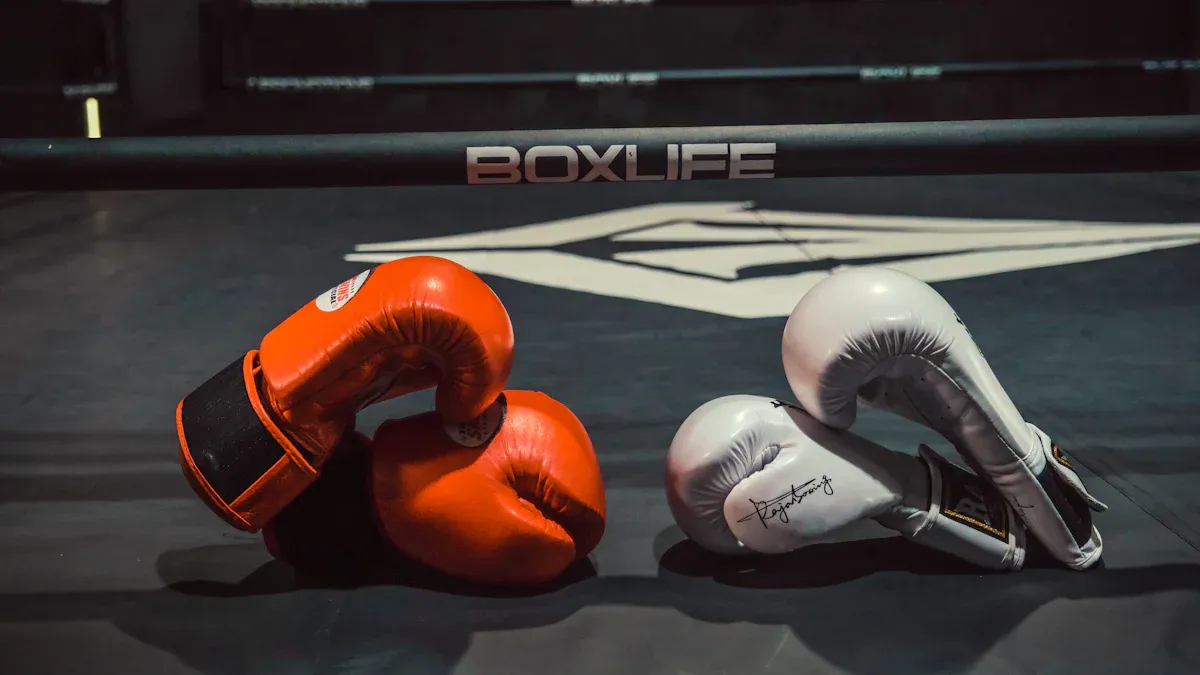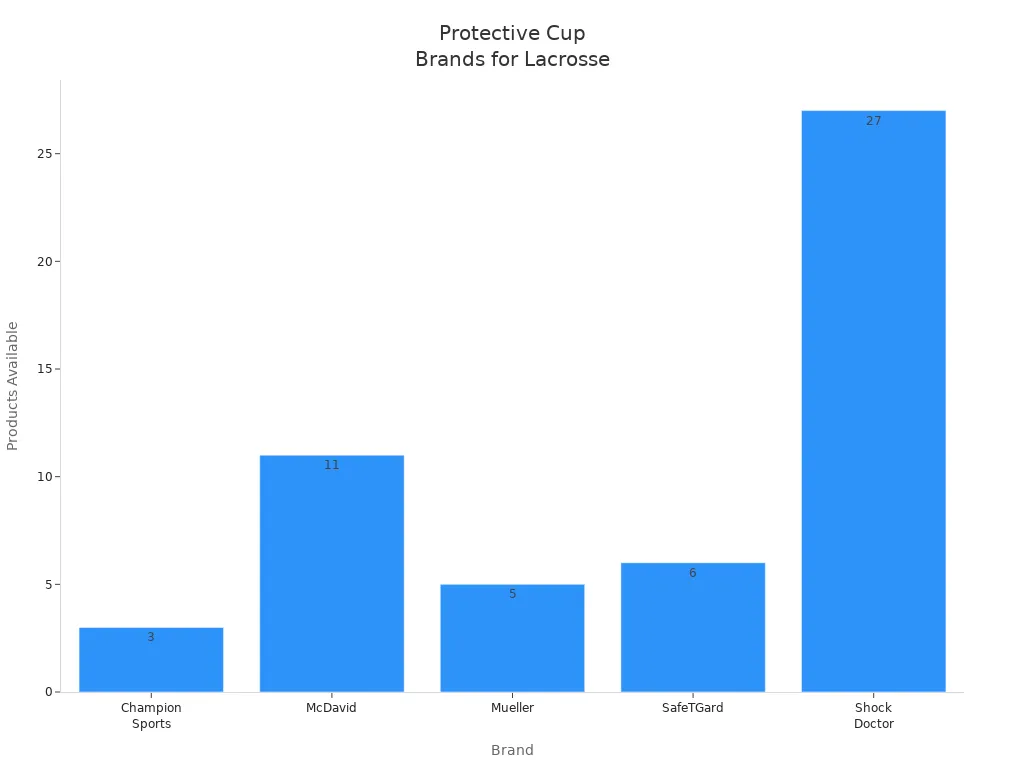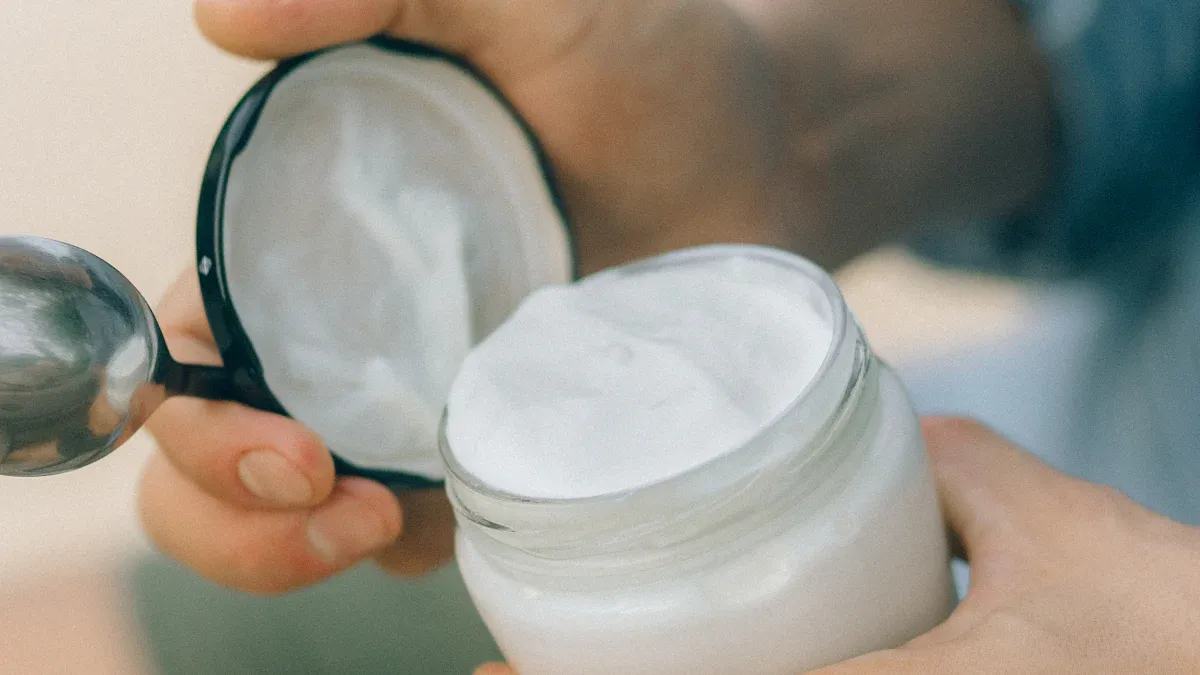Protective Athletic Cup Picks for Every Sport

You want to find the right protective athletic cup for your sport fast. Check out this table for top picks in 2025:
Sport | Top Pick | Quick Note |
|---|---|---|
Baseball | Shock Doctor Ultra Pro | High usage rate |
Lacrosse | Diamond MMA | Most athletes wear |
Football | McDavid FlexCup | Secure fit |
Hockey | Exxact Sports Elite | Extra impact shield |
Martial Arts | Diamond MMA | Flexible, tough |
Soccer | Shock Doctor Core | Lightweight |
Other Sports | McDavid FlexCup | Versatile |
Surveys show only a small percentage of athletes wear cups, except in baseball (40.6%) and lacrosse (51.5%). Pick your sport, check the top choice, and dive into the guide for tips on fit and safety.
Key Takeaways
Choose a protective athletic cup designed for your specific sport. This ensures better protection and comfort during play.
Fit is crucial. A snug cup prevents shifting and discomfort. Always try on different sizes and check sizing charts.
Regularly inspect your cup for damage. Replace it if you see cracks or if it no longer fits well to avoid injuries.
Clean your cup after every use with mild soap and water. Proper hygiene helps prevent odor and bacteria buildup.
Consider special features like breathability and flexibility. These can enhance comfort and performance during your sport.
Why Sport-Specific Cups Matter
Impact and Movement Differences
Every sport challenges your body in a unique way. You might sprint, slide, jump, or tackle. The kind of impact you face in football is not the same as in baseball or martial arts. For example, hockey players deal with fast-moving pucks, while soccer players focus on quick footwork and sudden changes in direction. A Protective Athletic Cup designed for one sport may not protect you well in another. You want gear that matches your sport’s movements and risks. If you play multiple sports, you’ll notice how each cup feels different during play.
Tip: Always check if your cup is made for your sport. You’ll get better protection and comfort.
Fit and Comfort Importance
You need a cup that fits your body and feels good while you move. If your Protective Athletic Cup is too tight, you might feel pain or chafing. If it’s too loose, it can shift and leave you exposed. The right fit lets you focus on your game, not your gear. Look for cups with soft edges, flexible materials, and adjustable straps. Many brands offer sizing charts, so you can pick the best option for your age and body type.
Try on different sizes before you buy.
Ask your coach or teammates for advice.
Choose breathable materials for less sweat.
Safety Risks of Wrong Cup
Wearing the wrong cup can put you at risk. If your cup doesn’t cover the right area, you could get hurt from a direct hit. Some cups crack or break if they’re not made for high-impact sports. You want to avoid injuries that could keep you off the field. Always replace damaged gear and check for signs of wear. Your safety depends on using the right Protective Athletic Cup for your sport.
Risk | What Can Happen |
|---|---|
Poor fit | Bruising, discomfort |
Wrong material | Cracks, less protection |
Wrong size | Shifting, exposure |
Stay safe and play smart. The right cup makes a big difference.
Protective Athletic Cup Picks by Sport

Baseball & Softball
You face fast pitches and hard hits in baseball and softball. You need a Protective Athletic Cup that can handle sudden impact. Top brands like Shock Doctor, Diamond MMA, Nutty Buddy, and McDavid offer strong options. Let’s compare some of the best-rated cups:
Athletic Cup | Price | Pros | Cons |
|---|---|---|---|
Comfy Cup | $15 | Comfortable, better than briefs | Limited protection, small capacity |
Shock Doctor Cup | $15 | Affordable, many designs available | Limited protection, smaller capacity |
Diamond MMA | $70 | Versatile, professional look | Underperformed in tests, pricey |
Nutty Buddy Cup | $35 | Comfortable, used by MLB players | Higher price, may be harder to find |
McDavid Athletic Cup | $12 | Very affordable, great protection | No extra features, basic brand perception |
You want a cup with a co-molded elastomer design and a polycarbonate core. These features give you comfort and protection. Ergonomic edges help shield sensitive areas. Impact deflection is key, so look for cups that spread force over multiple angles. Most baseball cups use a one-size-fits-most design, but always check the sizing chart before you buy.
Feature | Description |
|---|---|
Co-molded elastomer design | Provides comfort and protection |
Polycarbonate core | Offers rigidity and flexibility, similar to bulletproof glass |
Ergonomic edges | Protects sensitive areas with a soft elastomer edge |
Impact deflection | Multiple angles for better force deflection |
Sizing | One-size-fits-most design |
You can find these cups at DICK’S Sporting Goods, Amazon, and local sports stores. Prices range from $12 to $70. If you want extra comfort, try Nutty Buddy or Diamond MMA. If you want a budget pick, McDavid and Shock Doctor work well.
Tip: Always test the fit before your first game. A snug cup keeps you safe and focused.
Football
Football brings hard tackles and rough contact. You need a Protective Athletic Cup that stays in place and absorbs shock. McDavid FlexCup and Shock Doctor Ultra Pro are popular choices. McDavid FlexCup uses a flexible design for better movement. Shock Doctor Ultra Pro offers a secure fit with extra padding.
You want a cup with a wide waistband and adjustable straps. These features help the cup stay put during sprints and tackles. Look for cups made from tough polycarbonate or carbon fiber. These materials resist cracking and keep you protected. Most football cups cost between $15 and $40. You can buy them at DICK’S Sporting Goods or online.
Note: Football cups should fit snugly but not pinch. Try different sizes to find your best match.
Hockey
Hockey players face flying pucks and fast collisions. You need a Protective Athletic Cup with advanced coverage and comfort. Shock Doctor leads the way with several options:
Shock Doctor Compression Hockey Jock Pants: Compression fit keeps everything secure and prevents slippage.
Shock Doctor Mesh Hockey Jock Shorts: Loose fit with great ventilation and a vented body for breathability.
Shock Doctor AirCore Hard Protective Cup: Lightweight, uses 3-layer fusion technology for top protection.
Shock Doctor Ultra Pro Carbon Flex Cup: Multi-stage protection with a soft, contouring fit.
You want a cup that feels light but strong. Ergonomic fit and breathable materials help you move fast on the ice. Most hockey cups cost $20 to $60. You can find them at hockey shops and online retailers.
Hockey tip: Choose a cup with ventilation if you sweat a lot. It keeps you cool and comfortable.
Martial Arts & MMA
Martial arts and MMA demand flexibility and toughness. You need a Protective Athletic Cup that moves with you and absorbs kicks or strikes. Diamond MMA is a top pick for fighters. It uses a flexible design and strong materials. Shock Doctor also offers cups with soft edges and adjustable straps.
Look for cups with a contoured shape and soft lining. These features prevent chafing and let you move freely. Most martial arts cups cost $30 to $70. You can buy them at MMA stores or online.
Tip: Always check for a secure waistband. A loose cup can shift during grappling or sparring.
Lacrosse
Lacrosse players need speed and protection. You want a Protective Athletic Cup that stays in place and shields you from stick checks and balls. Top brands include Champion Sports, McDavid, Mueller, SafeTGard, and Shock Doctor. Shock Doctor offers the most options, with 27 products for lacrosse.
Brand | Products Available | |
|---|---|---|
Champion Sports | 3 | |
McDavid | 11 | |
Mueller | 5 | |
SafeTGard | 6 | |
Shock Doctor | 27 |

You want a cup with a flexible shell and soft edges. These features help you run and dodge without discomfort. Most lacrosse cups cost $10 to $40. You can find them at lacrosse shops and online.
Lacrosse tip: Try a few brands to see which cup fits your body best.
Soccer
Soccer players need agility and freedom to move. Many high school players choose compression shorts over cups for comfort. College players often wear softer jockstraps instead of hard baseball cups. Young players should use a Protective Athletic Cup with a proper fit and good hygiene.
You want a cup that doesn’t restrict your speed. Soft cups and flexible supporters work best. Hygiene matters, so clean your cup often to avoid odor and irritation.
Here are some affordable options for soccer:
Product Name | Price | |
|---|---|---|
Champion Sports Youth Deluxe Cup & Supporter Set | $10.09 | |
Markwort Men's & Youth Athletic Cups | $6.56 | |
Shock Doctor BioFlex Cup | $12.99 | |
Youth "Peewee - Age 5-7" Protective Athletic Cage Cup | $1.99 | |
Adult/Youth Wide Waist Band Athletic Supporter | $0.99 | |
Champro C-Flex Hard Cup A5C | $5.29-$5.69 |

You can buy soccer cups online or at sports stores. Prices range from $1 to $13 for youth models. Always check the sizing and try different styles for comfort.
Soccer tip: If you feel restricted, try a softer cup or compression shorts for better movement.
Other Sports
You might play sports like basketball, rugby, or field hockey. You still need a Protective Athletic Cup that fits well and protects you from impact. McDavid FlexCup and Shock Doctor Core are versatile choices. These cups use flexible materials and ergonomic shapes. You can wear them for many sports without discomfort.
Prices for multi-sport cups range from $10 to $30. You can find them at most sporting goods stores. Always check the fit and material before you buy.
Tip: If you play more than one sport, pick a cup with adjustable straps and a flexible shell.
How to Choose a Protective Athletic Cup
Fit & Sizing
You want your cup to fit just right. If it’s too big, it can move around and leave you unprotected. If it’s too small, it might pinch or feel uncomfortable. Always check the sizing chart before you buy. Try on different sizes if you can. Ask your coach or parent for help. A good fit lets you run, jump, and play without worrying about your gear.
Measure your waist and hips.
Look for adjustable straps or waistbands.
Make sure the cup covers the right area.
Tip: Move around when you try on a cup. If it stays in place, you’ve found a good fit.
Materials & Construction
Cups come in different materials. Some use hard plastic for strong protection. Others use softer rubber or foam for comfort. If you play a contact sport like football or hockey, pick a sturdy cup. For soccer or less contact, a lighter cup might work better. The way a cup is built matters too. Look for smooth edges and strong seams. These features help prevent scratches and cracks.
Comfort & Breathability
You want to feel comfortable during practice and games. Some cups have soft linings or mesh panels. These help keep you cool and dry. Breathable materials stop sweat from building up. If you feel itchy or sweaty, try a cup with more ventilation. Comfort helps you focus on your sport, not your gear.
Age & Skill Level
Your age and skill level matter when picking a cup. Young athletes should start wearing a cup as soon as they play contact sports. This helps you stay safe and get used to the gear. If you play at a higher level, you might need stronger protection. Here’s a quick guide:
Age/Skill Level | What to Look For | Why It Matters |
|---|---|---|
Kids (starting out) | Basic cup, soft edges | Builds good habits, keeps you safe |
Teens (more contact) | Sturdy plastic, snug fit | Handles rough play, better protection |
Advanced players | High-impact materials, custom fit | Maximum safety, fits your needs |
Note: Starting early helps you think of your cup as part of your regular sports equipment.
Special Features
Some cups have extra features. You might see anti-microbial linings, shock-absorbing pads, or flexible shells. These features add comfort and protection. If you play more than one sport, look for a versatile cup. Easy-to-clean designs help with maintenance. Always check for features that match your needs.
Tip: Wash your cup after every use. This keeps it fresh and ready for your next game.
Care & Maintenance Tips

Cleaning & Hygiene
You want your athletic cup to stay fresh and safe. After every practice or game, wash your cup with warm water and mild soap. Scrub gently to remove sweat and dirt. Rinse well and let it air dry. Never use harsh chemicals because they can damage the material. If your cup has a fabric lining, check the label for washing instructions. Some cups are dishwasher-safe, but always read the manufacturer’s guide first.
Tip: Clean your cup right after use. This helps prevent odor and keeps bacteria away.
Here’s a quick cleaning checklist:
Wash with soap and water after each use
Rinse thoroughly
Air dry before storing
Check for any leftover dirt or sweat
Storage & Longevity
You want your cup to last as long as possible. Store it in a cool, dry place. Avoid leaving it in your gym bag for days. Moisture and heat can cause the material to break down. Use a ventilated pouch or a mesh bag for storage. This keeps air flowing and helps prevent mold.
Storage Do’s | Storage Don’ts |
|---|---|
Use mesh bags | Leave in wet clothes |
Keep in dry area | Store in direct sunlight |
Separate from shoes | Toss in dirty locker |
Note: Good storage habits help your cup stay strong and comfortable.
When to Replace
You need to check your cup often. Look for cracks, sharp edges, or changes in shape. If you see any damage, replace your cup right away. Even small cracks can make the cup weak. Most cups last for a season or two, but heavy use means you might need a new one sooner. If your cup feels uncomfortable or doesn’t fit like it used to, get a new size or model.
Inspect your cup every month
Replace if you see damage or wear
Upgrade if you change sports or grow
🛡️ Stay safe by keeping your gear in top shape. A clean, well-maintained cup protects you every time you play.
You now know the best Protective Athletic Cup for your sport. Picking the right cup keeps you safe and comfortable. Groin injuries can damage joints and ligaments, so protection matters. You get better comfort when you wear the right cup and fit it correctly. Many sports see groin injuries, especially high-risk ones, so sport-specific gear helps. Use this guide to make smart choices. Ask your coach for advice or try on different models to find your best fit.
FAQ
How do I know if my athletic cup fits right?
You should feel snug support without pinching or shifting. Move, squat, and jump. If the cup stays in place and covers your groin, you picked the right size. If it moves or feels uncomfortable, try another size.
Can I wear the same cup for every sport?
You can, but it’s not always best. Each sport has different risks. A cup made for baseball may not protect you well in football or martial arts. Choose a cup designed for your main sport for the best safety.
How often should I replace my athletic cup?
Check your cup every month. If you see cracks, sharp edges, or if it feels loose, replace it. Most cups last a season or two. Heavy use or growth spurts mean you might need a new one sooner.
How do I clean my athletic cup?
Wash your cup with warm water and mild soap after every use. Rinse well and let it air dry. > Tip: Don’t leave your cup in your gym bag. Store it in a dry, ventilated spot to keep it fresh.
